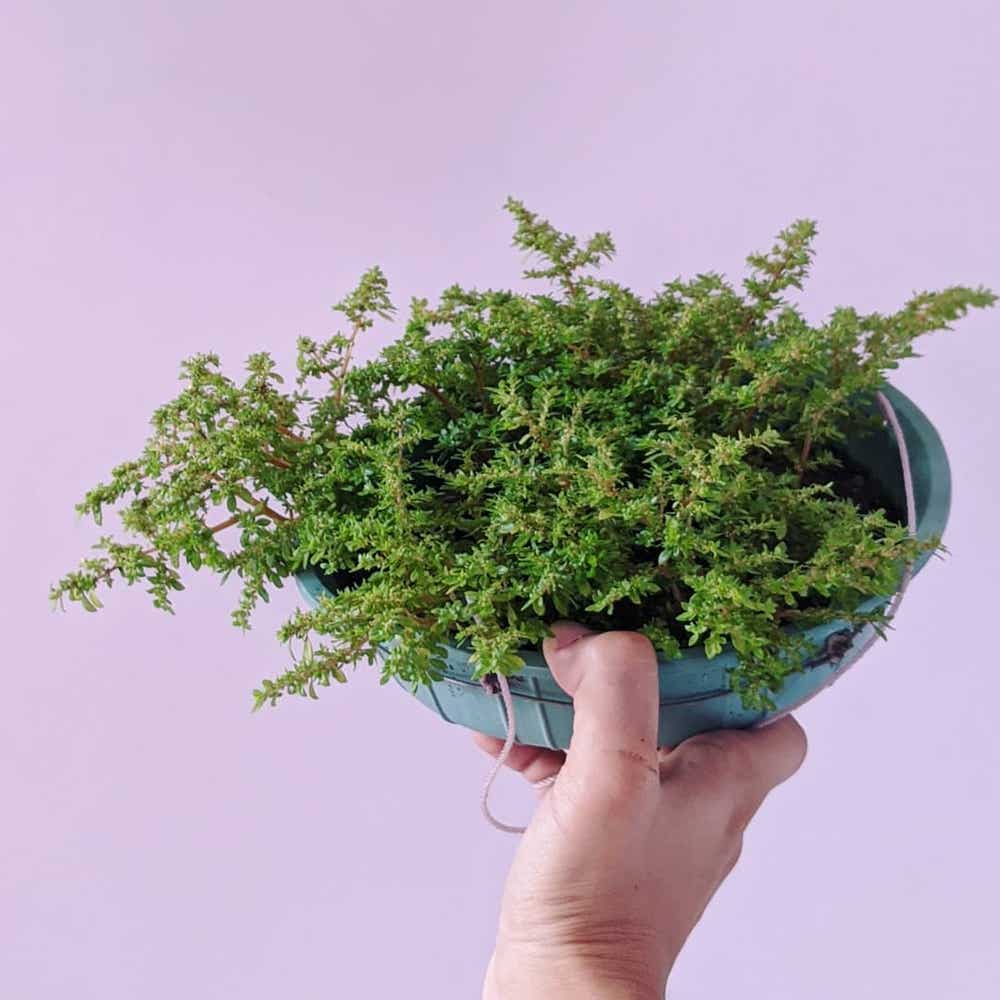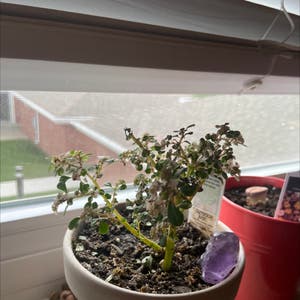




































Pilea Microphylla

4.6 out of 5 (5 experiences)
 Fast grower
Fast grower
 Survivor
Survivor
About Pilea Microphylla
Pilea plants are native to regions worldwide, and often have succulent, water-storing leaves. A handful of them are grown as houseplants, but the rest of the 600+ species are wild plants. Their name comes from the Latin for 'felt cap' which refers to the unique way that their fruits are protected. Fossils of Pilea species have been found dating back over 5 million years ago!
Taxonomy

Pilea microphylla
Pilea
Urticaceae
Rosales
Also known as
Rockweed, Rockweed, Artillery Plant, Gunpowder Plant and Pilea microphylla.

How to care for Pilea Microphylla
How often to water your Pilea Microphylla

every 9
Pilea Microphylla needs 0.5 cups of water every 9 when it doesn’t get direct sunlight and is potted in a 5" pot.
Use our water calculator to personalize watering recommendations to your environment or download Greg for more advanced recommendations for all of your plants.

Water 0.5 cups every
9
Finding light for Rockweed in your home

a window
Pilea Microphylla may have difficulty thriving, and will drop leaves 🍃, without ample sunlight.
Place it less than 3 feet from a south-facing window to maximize the potential for growth.
Select your region to see how the current weather in your area affects the placement of Pilea Microphylla in your home 🏡.
How to fertilize Pilea Microphylla

Most potting soils come with ample nutrients which plants use to produce new growth.
By the time your plant has depleted the nutrients in its soil it’s likely grown enough to need a larger pot anyway.
To replenish this plant's nutrients, repot your Pilea Microphylla after it doubles in size or once a year—whichever comes first.
-
Losing Leaves Is it normal for it to lose leaves during the winter? I feel like since it has grown that it has lost leaves as the colder weather came in. It’s still indoors but there is definitely less sun because of the season.
-
Should I spritz him daily ? #Rockweed
-
Hi! This guy is looking a little more sad since when I first purchased him a week ago. We have massive windows that get a lot of morning sun. Should he be more in the shade? #Rockweed
-
The #aphids have been attacking a lot of my plants lately with no sign of getting better, so I called the BUG guns in again. I seriously love #lacewinglarvae for this. I ordered 4,000 eggs a couple days ago and thank goodness they arrived today as I found the aphids on another plant! 🥲 Most of my monsteras, prayer plants, syngoniums and ZZs have been getting devoured and it's sad seeing how bad some of them look. I have included a snap of my Athena infested with aphids, the most recent victim of the attack. If you're Aussie and curious about #BeneficialBugs #beneficialinsects, this is where I buy mine from. I have used lacewing larvae before and they absolutely decimate aphids in no time, even better than I found with ladybugs. #PlantAddict #PLANTMAFIA #pests
-
I’m starting to think my plant is just a weirdo because it sheds little, tiny branch growths but the main stems are just thick and green as ever like nothing is wrong. And it’s growing up and not out/isn’t bushy at all like I’d expect it to be.
-
Really worried about my pilea moon valley Looking for guidance! My plant had black spots suddenly on most of its leaves so I cut them all off immediately thinking it was root rot and then repotted the plant. When I was repotting I noticed that the soil had been quite compact. Now my girl is so sad and demoralised looking. Can she recover from this? How can I help? #Pilea
-
My pilea wasnt looking so good the past winter so i had to plop this bad boy into lecca and it looks like its doing well. I see a new leaf coming. #Pilea
-
Brown dry spots My #Pilea has these dry looking brown spots. Been thinking it wasn’t getting enough humidity but I moved it to a bright bathroom and it keeps drying. Any suggestions?
-
Yellowing leaves #Pilea my Chinese money plant’s leaves are yellowing. Is this an indicator of not enough water?
-
Don't let my excitement over my Tradescantia Nanouks overshadow how cool these Petra Croton and Friendship Plant (Pilea involucrata) are! I got these at the same greenhouse today. 😁 #greggang #newplantmom #newplants #petracroton #croton #friendshipplant #pilea #happyplants #plantaddict #plantsmakepeoplehappy
Care Summary for Pilea Microphylla

Pilea Microphylla
 Greg recommends:
Greg recommends:
 Water
Water
0.5 cups every 9 days
 Placement
Placement
< 3ft from a window
 Nutrients
Nutrients
Repot after 2x growth
Based on the 4” pot your plant is in, and that it doesn’t get direct sunlight.

What other plant parents say
 Fast grower 2
Fast grower 2
 Survivor 2
Survivor 2

 Trending in your area
Trending in your area
 Similar to Pilea Microphylla
Similar to Pilea Microphylla
✨ Discover rare plants

Ruby Ball

Ceropegia simoneae

Blushing Aeonium

Scindapsus pictus 'Si…

Euphorbia baioensis

Sedeveria 'Blue Elf'

Miss All-American Bea…

Hoya 'Millie'

Aglaonema Spitfire

Ace of Spades

Electric Blue Gecko

Hylotelephium siebold…

Echeveria Arrow

Raphionacme flanaganii

Fagraea ceilanica

Electric Fern

Caladium











































